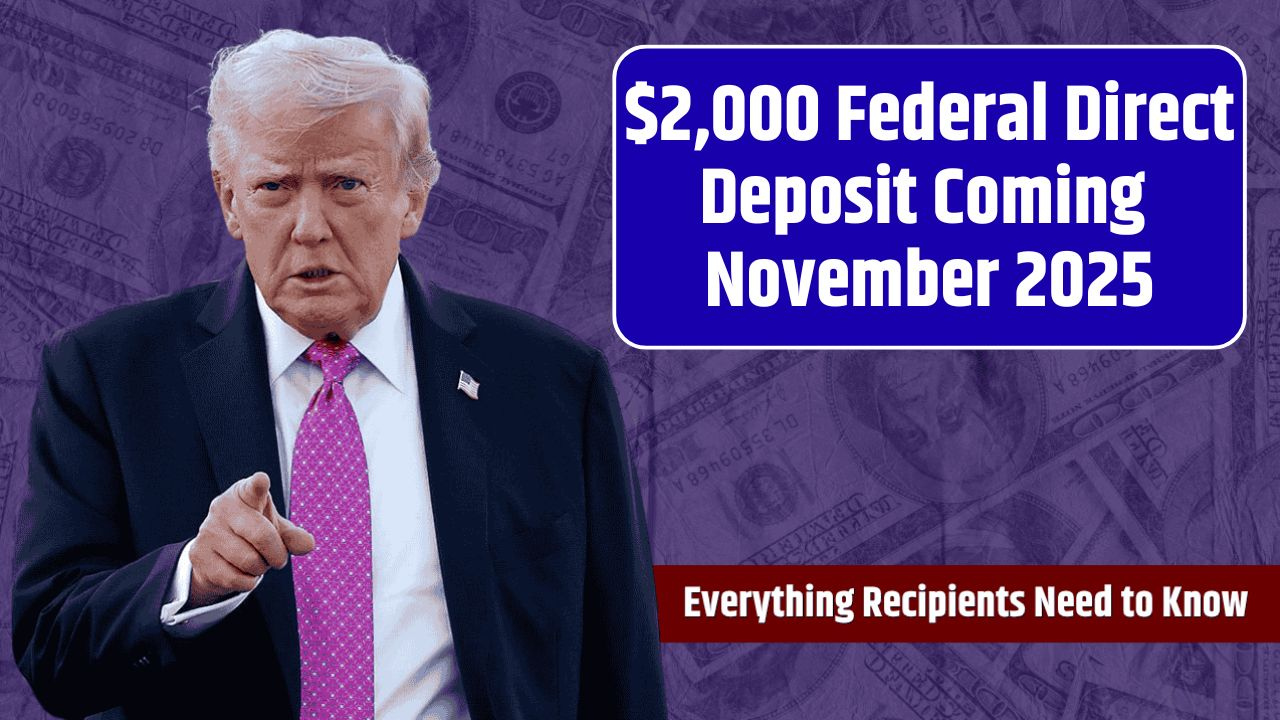As the cost of living in the United States rises, many families are feeling more financially strapped than ever before. From groceries and prescription drugs to gas and rent, the prices of everyday necessities have risen faster than many households’ wages. Therefore, the $2,000 direct deposit payment expected in November 2025 has been welcomed with relief and hope across the country.
While this payment isn’t officially branded as a traditional stimulus check, its purpose remains the same: to provide direct monetary relief to Americans who need it, especially senior citizens, low-income families, and those experiencing income difficulties. The IRS is expected to handle this distribution, ensuring the process is smooth, secure, and based on updated tax and federal records.
Below is a full breakdown of who qualifies, when payments can be expected, how they will be delivered, and what steps citizens should take to ensure their payments arrive without delay.
Why a $2,000 Payment in 2025?
The U.S. economy is recovering in many ways, but millions of people are still struggling to cope with inflation. Housing costs remain higher than ever, healthcare is more expensive than ever, and utility bills are rising.
A $2,000 direct deposit in November 2025 could provide significant assistance to families, including:
- Rental or Mortgage Payments
- Utility and Energy Bills
- Medical Treatment and Prescriptions
- Groceries and Daily Essentials
- Debt Payments and Emergencies
For many senior citizens, people with disabilities, and low-income workers, this payment can be the difference between paying the bill and falling behind.
Eligibility Requirements
Although final IRS guidelines will be confirmed closer to rollout, eligibility is expected to follow the pattern of recent federal relief programs.
Income Limits
To qualify for the full $2,000 benefit, the income limits are expected to be as follows:
- Single filers: Up to $75,000 AGI
- Married individuals filing jointly: Up to $150,000 AGI
- Head of household: Up to $112,500 AGI
Earnings above these limits may still receive a reduced payment, which will be phased out based on adjusted gross income.
Citizenship and Residency
- Applicants must:
- U.S. Citizen or Permanent Legal Resident
- Mostly residing within the United States
Tax Filing Status
The IRS will determine eligibility using their 2024 federal tax returns. Filing taxes is one of the primary ways citizens verify:
- Income Level
- Filing Status
- Dependents
- Banking Information
Federal Benefit Recipients
Those who receive federal benefits may also qualify, including:
- SSI (Supplemental Security Income)
- SSDI (Social Security Disability Insurance)
- Veterans Affairs Payments
- Railroad Retirement
Even if they don’t file tax returns, their eligibility can be verified using existing benefit records.
How will the payment be issued?
The IRS will distribute the $2,000 in several ways, depending on what information is already available.
1. Direct Deposit
This is the fastest and most secure method. Payments will go directly to:
- Bank accounts listed on the latest tax return
- Accounts used for federal benefits
Those with up-to-date banking information can expect the earliest deposits.
2. Paper Check
If no direct deposit details are available, the IRS may mail a paper check to the address on file. This method typically takes longer due to postal processing time.
3. Prepaid Debit Cards
Some people—especially those without bank accounts—can get instant-load debit cards for easy access.
Expected Payment Dates
Although the IRS will release final dates closer to November 2025, here’s a tentative timeline based on previous payment cycles:
Direct Deposit:
November 7 – November 27, 2025
Paper Check:
November 20 – December 12, 2025
Federal Benefit Recipients:
Payments may align with the regular monthly benefit calendar.
IRS Instructions to Ensure Smooth Delivery
To avoid delays or missed payments, the IRS recommends that eligible individuals:
File their 2024 tax return
This is the main way the IRS verifies:
- Income
- Household Status
- Dependents
- Banking Information
Even those with little or no income should file if possible.
Update Banking Information
Those who have changed banks or closed old accounts should update their details with the IRS. Outdated information may result in rejected deposits and delays.
Confirm Mailing Address
If receiving a check or debit card, ensure the IRS has the correct current address.
Be Alert to Scams
The IRS will never call, text, or email asking for banking or Social Security details. Official notices are mailed or published through IRS.gov.
How to Check Payment Status
When payments begin to arrive, people will be able to check progress through the following methods:
- IRS “Get My Payment” tool
- IRS2Go mobile app
- Email notifications confirming payment details
These tools typically require identity verification, such as SSN, filing status, or AGI.
Frequently Asked Questions (FAQs)
1. Is this an official stimulus payment?
No, but it serves a similar purpose: direct financial relief for eligible Americans.
2. Do I need to apply?
Most people do not. The IRS will issue payments automatically based on tax or federal benefit records.
3. What if I didn’t file taxes?
If you receive benefits like SSI or SSDI, you may still qualify. Others should file a return to avoid missing out.
4. Is the payment taxable?
No. Relief payments like this are non-taxable and do not affect future refunds.
5. What if I don’t have a bank account?
You may receive a paper check or prepaid debit card instead.

